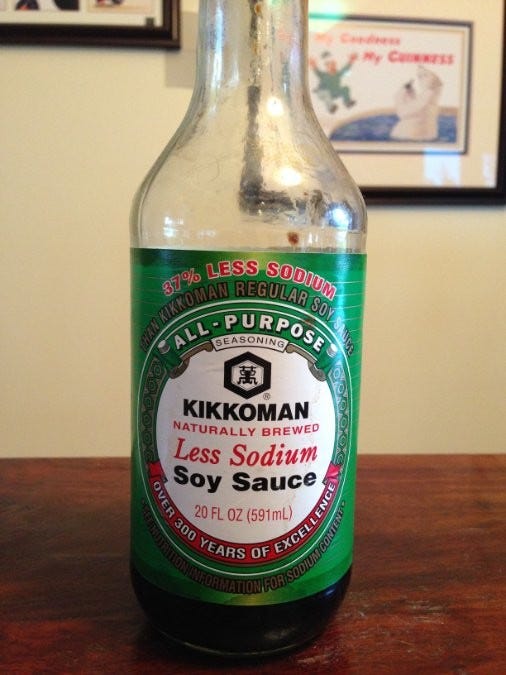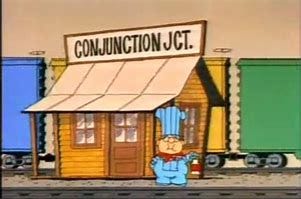Transform Your Writing and Content Marketing With This Not-So-Secret Step
Editing (the not-so-secret step) isn't limited to grammar and spelling. Editing is also the art of knowing what to cut, add, and/or add shine to.
Editing is the umami of content marketing.
It’s that elusive “fifth flavor” that makes the words explode on a page like flavor explodes on your tongue when you have that just right amount of umami.
You have to know what to add. As important, you have to know what to take out.
I was an editor for the majority of my career, so I am a little biased here. Still, the importance of knowing how to be your own editor, of taking away from here and adding a little there, subtle changes that make a big impact, is a skill we should all strengthen.
Oddly enough, it was recently watching Season 20 of Project Runway that reminded me of the importance of editing.
But, Editors Just Do Commas and Stuff, Right?
Most folks think of editors as the person who checks for typos and grammar while offering suggestions about flow, weak writing, etc.
However, depending on the publication and editorial role, “word stuff” might not even be part of an editor’s job.
A managing editor is usually in control of the schedule, coordinating production so the issue gets printed and mailed on time (missing your print window is NOT a good thing; happened to me once).
My managing editor at AIIM rarely reviewed copy, that wasn’t what she was hired to do. But she kicked buttocks at keeping me on schedule. And her great relationship with our printer (as in a giant honking printing press, not the beige, plastic thing around the corner in the office) meant a minimal delay the time I missed our window—and it didn’t cost us anything.
On the other hand, copy editors do nothing but play with words and headlines.
The editor-in-chief sets overall editorial direction and probably has a hand in marketing and circulation efforts.
Some editors write; others assign. Variations and overlap between titles and responsibilities varies widely from publication to publication.
Focusing on the content of what goes into a publication (magazine, website, blog, newsletter, whatever), a good editor is equally adept at knowing what to remove as what to keep or add to.

But, Uh, What Was That About Project Runway?
I’ve loved Project Runway from the first season. In season 19 there was a lot of commentary about “editing.”
Obviously, they weren’t talking about dependent clauses and subject/verb agreement. In fashion, editing can mean toning down a piece of clothing (using a simple pattern and focusing on fit over a more ambitious cut) or going with a muted accessory over a loud one to emphasize the piece of clothing.
For one challenge, a designer had created multiple items—pants/dress combo, shirt, and a jacket. While the judges admired the creativity, they also said the designer might have won the challenge by focusing on either pants OR dress.
Editing, in other words.
Maybe that blog you edited needs a bow (stronger headline).
Or the newsletter needs to ignore the jacket to focus on perfecting the top (it’s trying to cover too much ground).
Editing involves feel and instinct that you develop over time so you sometimes know (no one ever knows all the time): yeah, this is it.
In fashion, even I can see the difference when the judges on Project Runway make a comment, have the designers make a slight tweak (remove a hat or earrings or jacket) and suddenly the outfit looks radically different – and better.
Great cooks are editors in a way – a little of this, none of that, never this other—and the talent and time and instinct leads to a fantastic meal.
Editing: Beyond the Comma
Good editing makes everything better.
I'm not talking about the grammar stuff—that's assumed (though we still get too wrapped up in grammar). And I'm not talking about the editing part of writing.
Editing is also parsing through and shaping the ideas for your audience and the medium you're using (words, video, graphic, etc.).
It’s leading an audience to what they need to know.
Setting an agenda.
Anyone can sit down and pump out a list of ideas for content to market their product.
Editing is sifting and sorting these ideas into the ones that will work (or at least that you hope will work; there ain’t no guarantees).
How long will it take to write and produce an ebook?
Do you have time to create good content before the campaign needs to launch?
Are all of the editing and design workflows in place (and do folks have the capacity to pull it off)?
Can you combine R and I to make A (and maybe D and Z)?
An editorial eye can take a look at ideas and get them in order quickly.
Some ideas might be fantastic for video, but not in writing. And vicey versy. Editing also involves knowing something about how you want it to look and feel on the "page." You don’t need to be a designer, but having some concept and point of view about how you want things to look, will help in getting the point across to your audience.
And that’s the goal after all.
As with flavor, knowing when NOT to edit is also a crucial skill and part of being an editor. Too much soy sauce can ruin a dish; over-editing can ruin your content.
Don't edit for the sake of editing. Sometimes ideas come and are just good ideas.
Get out of their way and move on quickly to implementation!
And don’t over edit to the point of making someone’s distinctive voice sound like you. That’s ego, not editing. Know when to not get in the way.
Be an editor; it'll make your content marketing taste even better.
9 Practical Editing Tips That Will Elevate Your Work
Editing, like cooking, thrives on balance and the right adjustments. Here are nine quick, no-nonsense tips to sharpen your content and let your ideas shine:
Step Away
After writing, give yourself distance—minutes, hours, or a day. Fresh eyes catch stale sentences and awkward phrasing that might otherwise blend into the background. (Think of it as resetting your taste buds before tweaking a recipe.)Kill Your Darlings—Gently
If a sentence or paragraph doesn’t serve the core purpose, cut it. Your audience wants clarity, not a display of your vocabulary or clever analogies. Clarity trumps complexity. HOWEVER, we all love our darlings. Keep a document and paste your excised darlings into it. Review it now and again for new ideas and even adding those phrases/sentences into the thing you’re writing NOW, where it might be a perfect fit.Embrace the Reader's Perspective
Ask, "Does this make sense to someone outside my bubble?" Strip out insider jargon unless your audience specifically demands it. If you’re writing FOR insiders, jargon helps with clarity rather than causing confusion.Read It Aloud
It’s weird and awkward at first, but this trick helps to catch odd rhythms or too-dense sentences. (And I should do it more often!)Lean Into Simplicity
Everyone hates this one. Especially for BUSINESS writing, do it anyway. And don’t mistake simple for unprofessional. Writing to a 6h to 8th-grade reading level often delivers clarity and relatability—qualities that resonate more than sophistication for its own sake.Focus on Flow
Editing isn’t just about cutting. Sometimes, reorganizing a sentence or paragraph for smoother transitions makes all the difference. Think: should this sentence be the opener or the punchline?Use Tools Sparingly
Grammarly, Hemingway App, and readability tests are helpful but don’t rely on them blindly. Use them to check for glaring errors, not to dictate your style.Know When to Stop
Over-editing is real. Avoid stripping away a writer’s natural voice or polishing to the point of blandness. A little imperfection often feels authentic.Get a Second Opinion
Even the best editors need feedback. A colleague or friend may catch what you missed, especially when you’re too close to the material to see it clearly.
Editing: The Secret Ingredient That Changes Everything
Editing isn’t just a skill—it’s an art, a craft, and a secret weapon all rolled into one. It’s the reason good content becomes great and why your message sticks long after the page is closed.
It’s not about chasing perfection or flexing your grammatical muscles; it’s about understanding what your audience needs and delivering it with clarity, impact, and just the right amount of flavor. Whether you’re slicing out the excess, seasoning with specifics, or giving your work time to marinate, great editing turns good content into something unforgettable.
So, channel your inner chef, your Project Runway judge, or your trusted editor-in-chief. Be bold. Be precise. And remember, when in doubt, a little less salt—or one less word—can make all the difference.
Happy editing. Make your content taste like success.
Let’s work together to find you more customers using content marketing. A great starting point is my newsletter-in-a-box done with you service. I look forward to helping grow your business, bryant@simplyusefulmarketing.co.
If you enjoyed or found this useful, please consider sharing with a restack, share to your favorite social media platform, and/or leave a comment (or even a recommendation if you REALLY like this newsletter).



